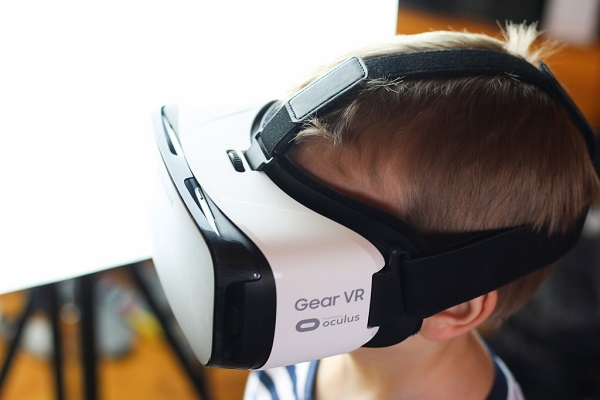The further we delve into the digital revolution, the further we are stepping away from reality and into worlds created for us.
This is evident in the rise of virtual reality, and the VR headsets which are now so readily available on the consumer market.
The fast-paced world which we live in requires us to take a step back from time to time – an opportunity to get away from it all and unwind from the stresses of daily life. This is one way in which virtual reality is able to help us as a species, but just how safe is the use of this technology – especially when it comes to children.
Well, the bad news for those of you who were thinking of buying your children a VR headset for Christmas is that no child under the age of 13 should ever use one. This is according to almost all the manufacturers of VR products, except Playstation, who deem the age of 12 as acceptable for use of its headsets. To be honest, nobody under the age of 18 should in reality be utilising this technology.
But why is this the case?
Well, the human brain takes 25 years to fully develop in men, and 21 years for women. While the brain is able to handle a plethora of information thrown its way, we as humans are not designed to compute what virtual reality provides – yet. While there is nothing wrong with using the technology in theory – and no major issues have been brought to the attention of the scientific world, the use of these devices by young children may have a detrimental effect on the development of the brain – both emotionally and physically.

The really scary aspect here is the fact that science has not been able to provide a proper explanation as to the pros and cons of virtual reality and its headsets. This could be down to the fact that the technology is still relatively new, so in essence this is a case of rather being ‘safe than sorry’ where children are involved. It is also important to remember that the use of children in scientific studies is still seen as unethical, so the cloud hanging over VR usage in children will remain dark for some time.
Marientina Gotsis, director of the Creative Media & Behavioral Health Center at the University of Southern California School of Cinematic Arts, told Live Science: “We do not have enough data on the safety of current VR technology for children. So, the sparsity of research data and what we know about neuroplasticity [the brain’s ability to reorganize itself] and children does not make me comfortable to recommend what is available now as is.”
READ: The weird world of eSports terminology
Martin Banks, Professor of Optometry, Vision Science, Psychology, and Neuroscience at the University of California, Berkeley, expanded on Gotsis’ thoughts, telling Digital Trends: “So far I’ve seen no so-called smoking gun, no concrete evidence that a child of a certain age was somehow adversely affected by wearing a VR headset. My guess is that all they’re doing is saying that kids are developing and development slows down when they reach adolescence, and so lets just play it safe and say that while these kids are undergoing significant development, we’ll advise people not to let them use it.”
While the effects on the brain while using VR technology are inconclusive, Banks added that these devices may well have an adverse effect on the long-term eyesight of the younger children using them – which is backed up by previous research into ‘near work’.
“There is pretty good evidence, particularly among children, that if you do so-called near work, where you’re looking at something up close, like reading a book up very close or looking at a cellphone, that it causes the eye to lengthen and that causes the eye to become near-sighted,” he added.
So, before you purchase that VR headset for your child this Christmas, remember that while there is no concrete proof of the technology impacting on the development of children, the unknown aspects of this shift in technology should be seen as something of a red flag.